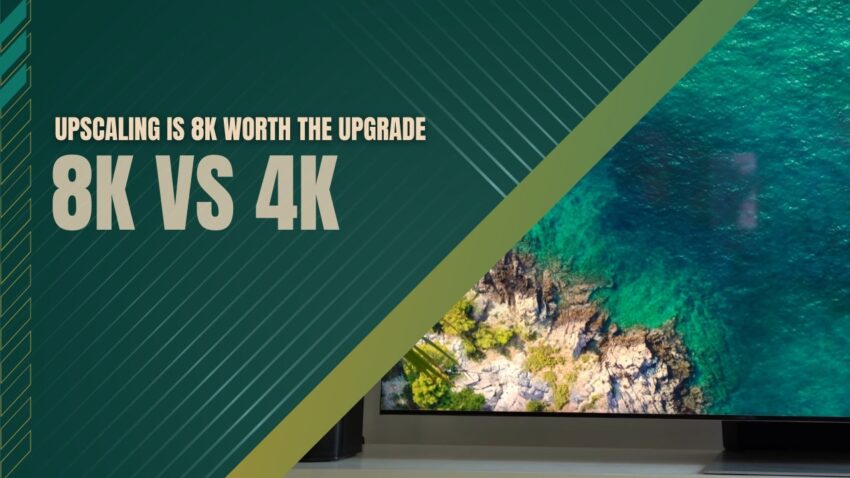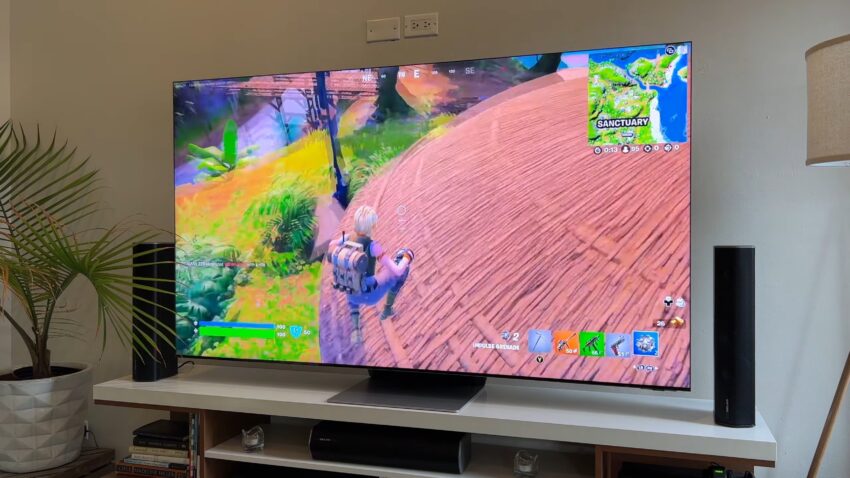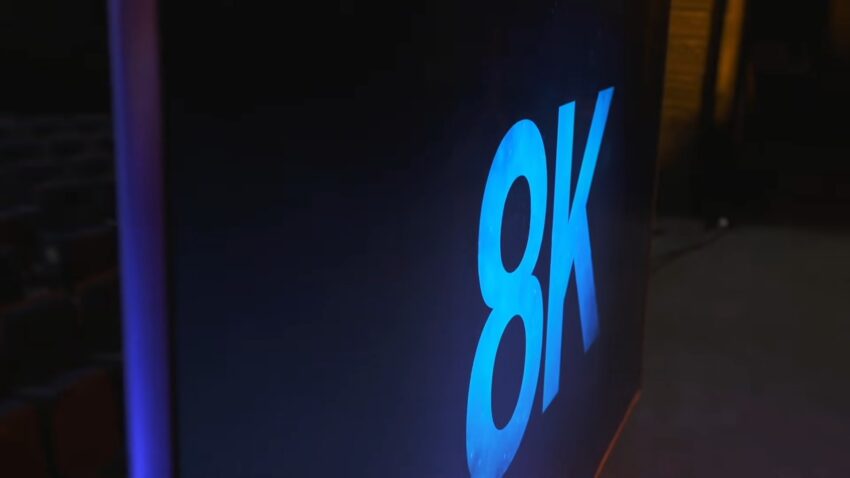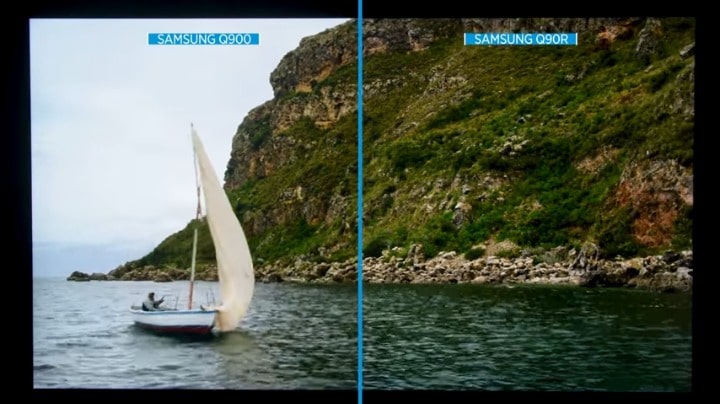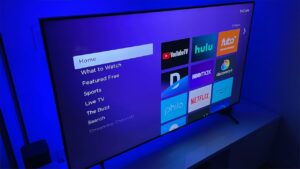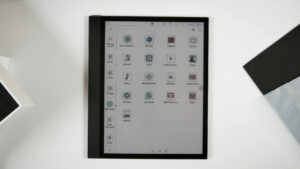It’s really hard to keep up with TV technology. Anyone who has owned a new TV in the last few years is sure to know the experience. You saved all your cash on a new best-in-class TV and, soon after you set it up, a new batch of next-generation TVs is revealed, which claims to outperform your new set in almost every way.
This is where we are in the battle of 8k and 4k TVs for now. While universal exposure to true 8 K UHD content is a long way off, several TV manufacturers expect that the incredible upscaling and better regulation provided by this first wave of 8K sets will help to satisfy viewers that upgrades from 4K TVs are already worth.
The advantages of 8k over 4k on display are clear. But unlike the switch between 4k and 1080p, the difference is not as noticeable in reality. 8k TVs have four times as many pixels as their 4k equivalents and 16 times as many pixels as 1080p TVs.
Those additional pixels can make a significant difference in picture quality, but they do that only if you’re viewing native 8k content and you’re sitting close enough to feel the difference. See also our recommendations on Samsung vs Sony.
Why does it matter?
Simply put, the resolution is the collection of pixels used to make up the picture of your Television. Higher quality screens make it possible to see more fine info on your favorite sports, videos, and TV shows. Upgrading to higher quality TV may sound like a no-brainer, but it’s not always necessary.
Although most of the new TVs have a 4k resolution, the first 8k TVs have started to enter the market. So, if you’re looking for a new TV, are you going to have a 4k or 8k?
| 8k | 4k | |
| Sizes available | Good | Great |
| TV Sizes Available | 55″ to 100″+ | 40″ to 100″+ |
| Height in pixels | 4320 | 2160 |
| Width in pixels | 7680 | 3840 |
| Availability | Okay | Excellent |
| Content Availability | Extremely limited | Excellent |
Content
There is actually almost no 8k content available. There are actually a few demo clips available on YouTube, as well as a few advanced tutorial videos available for free. On the only 8k TV we’ve reviewed so far, the Samsung Q900R, the only 8k videos available on YouTube are limited to 4k replay, since the TV actually may not accept YouTube’s 8k file format.
Some of the latest PCs will display at 8k but are limited to a maximum refresh rate of 30Hz and there are a few other limitations. This is due to the HDMI 2.0 bandwidth limitations, and this condition will improve drastically after the first HDMI 2.1 graphics cards have been released.
One of the key factors for scarcely any usable content is that the vast majority of video production is only produced in 4k or lower. A few recent films, including Disney / Marvel’s Captain Marvel and the Guardians of the Galaxy Vol, were at least partly filmed in 8k. 2, but then these were just partly shot in 8k, and the actual videos were mastered in 4k. 8k videos are expected to be at least 3-5 years away.
Winner: 4k. This will likely take a while to change, but eventually, the availability of 8k content will improve.
| 8k | 4k | |
| UHD Blu-Ray | No | Yes |
| Netflix | No | Yes |
| Amazon Video | No | Yes |
| Vudu | No | Yes |
| YouTube | Yes | Yes |
| Game Consoles | No* | Yes |
| PC Games | Yes | Yes |
Gaming
Gaming on 8K TVs is still in its early stages due to the limited availability of 8K content, but many gamers are curious about the potential benefits of gaming on an 8K TV versus a 4K TV. While 8K TVs offer significantly more pixels than 4K TVs, there are several factors to consider when it comes to gaming.
Firstly, it’s worth noting that 8K gaming is only possible with a few select graphics cards and consoles that support 8K resolutions. As of 2024, the PlayStation 5 and Xbox Series X are capable of outputting 8K resolutions, although many games are still designed to run at 4K or lower resolutions. Additionally, only a few high-end graphics cards from Nvidia and AMD currently support 8K gaming on PC.
One of the main benefits of gaming on an 8K TV is the potential for more detailed and realistic graphics. With four times as many pixels as a 4K TV, an 8K TV can display finer details and textures, making games look more lifelike. This can be especially noticeable in games that feature large, open worlds or highly detailed environments.
Another advantage of gaming on an 8K TV is the potential for larger displays. While 4K TVs are available in a wide range of sizes, 8K TVs are generally only available in larger sizes due to the higher pixel count required. This can make for a more immersive gaming experience, especially for gamers who prefer to sit closer to the screen.
However, there are also some drawbacks to gaming on an 8K TV. One of the main issues is the limited availability of 8K content. While some games and consoles support 8K resolutions, most games are still designed to run at 4K or lower resolutions. This means that gamers may not see a significant difference in image quality when gaming on an 8K TV versus a 4K TV.
Another issue is the high cost of 8K TVs. As with any new technology, 8K TVs are currently quite expensive, with some models costing several thousand pounds. This can make them prohibitively expensive for many gamers, especially those who are happy with the image quality offered by 4K TVs.
Winner: 8k. Although 8k gaming is currently nearly non-existent, this will change very quickly once new graphics cards and consoles have been released.
Native 8k vs 4k
The two images above show the same picture in separate native resolutions. The first picture is a native 8k picture, seen on a native 8k TV, the Samsung Q900R. The second image is a native 4k image, seen on a native 4k TV, the Sony X950G.
Samsung provides a clear picture, but in fact, it’s only visible from an incredibly close-up. From a decent viewing point, the two pictures look nearly close.
It is necessary to remember that this comparison is based on a valid 8k image. 8k video is virtually non-existent at this point, and much of what you’re looking at is probably lower resolution content upscaled to 8k, which looks different from native 8k and 4k.
Winner: 8k. The higher resolution results in a slightly more detailed image, but the benefits are limited.
4k Upscaled to 8k vs 4k
In order to display low-resolution content on an 8k TV, the Television will conduct a procedure called upscaling. This process improves the pixel count of a lower resolution image, enabling a device with less pixels to match a device with several more. It is necessary to note that because the number of details in the signal will not change, there should be no further detail present.
With 8k TVs, upscaling efficiency is more important than ever before. Since the majority of broadcast material is only 1080p or much lower, 8k TV will interpolate ~94 percent of the pixels when viewing 1080p video.
Winner: 4k, but barely. 4k on a native 4k TV will always look slightly better than an upscaled image.
Viewing Distance – 8k vs 4k
Having an 8k TV and genuine 8k content isn’t enough. There are limits to what your eyes can see, and if you are too far away from the TV, you won’t see any advantage with an 8k display over a 4k display.
As you can see, 8k TVs are most useful while sitting extremely close to the TV-far closer, in reality, than most people are sitting comfortably.
That doesn’t mean you’re not going to see any change at all – it just means it’s not going to be important. It all depends on the quality of the video you’re viewing. But high definition TV can’t render low-quality content appear good.
Winner: 4k. 8k TVs allow you to sit closer to the TV, but this is too close for most people.
Build quality: Comparing Samsung Q900 vs Samsung Q9FN
From the front, the two TVs are similar in terms of style, with both featuring the straight edges and pointy corners common of the company’s latest versions.
The Q900R bezels are positioned outwards rather than inwards like they are on the Q9FN, and the Samsung branding has been relocated from the top to the bottom right.
The main difference is in the stands, with the Q9FN having an elegant pedestal, while the Q900R gets more functional legs. Such legs can be placed either at the ends of the bottom edge of the Q900R or closer to the center, or they can be tucked away into unique recesses at the rear of the safe-keeping package if you want to be wall-mounted.
The uniform width of the Q900R and its fully flat back makes it appear more like a curvy photo frame when assembled, while the smooth tapering of the Q9FN covers the fact that it is only a bit thicker than its 8K.
All TVs utilize Samsung’s One Connect model, which requires all connections to be moved from the rear of the set to a different One Connect panel, with the two components linked via a small, semi-transparent cable.
It’s an outstanding feature, but it doesn’t provide a point of differentiation between these two sets – while Samsung claims it would replace the One Link box of the Q900R with one that completely supports HDMI 2.1, free of charge if requested by the user.
Sound
Samsung has so far ignored the recent trend of building TVs with integrated soundbars, however, the virtually invisible Q9FN and Q900R speaker systems both deliver shockingly well-performed audio performance.
The optimized model is better in all cases. Once picked, both TVs provide a big, bold, and spacious output with a relatively simple, concise dialogue. Of the two, the Q900R is a little more complete-bodied and more dynamic, but it’s not a night-and-day upgrade worth spending the extra amount.
What’s more, both TVs can be easily and cost-effectively improved through the addition of a separate soundbar.
FAQs
Q1: What is the difference in price between 8K and 4K TVs?
8K TVs are typically much more expensive than 4K TVs, with prices ranging from several thousand to tens of thousands of pounds. This can make them an impractical option for many consumers.
Q2: Are there any benefits to owning an 8K TV if I don’t have access to 8K content?
Even if you don’t have access to native 8K content, an 8K TV may still provide a slightly better viewing experience for upscaled 4K and lower-resolution content. However, the benefits may be marginal and may not justify the high cost of an 8K TV.
Q3: What is the maximum screen size available for 8K TVs?
8K TVs are available in sizes ranging from 55 inches to over 100 inches. However, larger screen sizes are typically much more expensive.
Q4: Can I watch 8K content on a 4K TV?
No, 8K content cannot be properly displayed on a 4K TV. However, some 8K content may be downscaled to 4K for display on a 4K TV.
Q5: Are there any downsides to upscaling content on an 8K TV?
Yes, upscaling content on an 8K TV can result in a loss of detail and a slightly blurry image. This is because the TV is adding pixels that were not present in the original image, rather than displaying native 8K content.
Q6: Can 8K TVs display HDR content?
Yes, 8K TVs can display HDR (high dynamic range) content, which provides a wider range of colours and contrast levels for a more vibrant and lifelike viewing experience.
Q7: What is the difference between OLED and LCD 8K TVs?
OLED 8K TVs provide better contrast and black levels, while LCD 8K TVs can provide higher peak brightness. The choice between OLED and LCD 8K TVs ultimately depends on personal preference and viewing environment.
Q8: Do I need a special HDMI cable for 8K content?
Yes, in order to properly display 8K content, you will need an HDMI 2.1 cable, which can handle the increased bandwidth required for 8K resolution.
Q9: Are there any benefits to owning an 8K TV for gaming?
8K TVs may provide a slightly better gaming experience for games that support 8K resolution, but the benefits may be limited. Additionally, 8K TVs may not be compatible with some older gaming consoles or devices.
Q10: Are there any advantages to owning an 8K TV for professional use?
8K TVs may be beneficial for professionals working in fields such as video editing, photography, and graphic design, as the higher resolution can provide more detail for precise editing and analysis. However, the benefits may be limited if the content being viewed is not produced at an 8K resolution.
Conclusion
8k TVs are an incredible step-up of Television capabilities. Offering 4x the amount of pixels of a 4k TV and 16x the amount of pixels of a 1080p Screen, these new screens offer stunning resolution rates. Unfortunately, as amazing as these TVs are, there is absolutely no material available to them. This is likely to change over the coming years when more 8k content becomes available, but it is expected to take at least 3-5 years for 8k videos, so it’s definitely not worth 8k TV right now.
Winner: 4k, for now.
Related Posts:
- Samsung VS Sony TV: Which TV Brand is Better - 2024…
- Sony X900H vs LG NANO90 2024 - Battle of the 4K Titans
- LED vs LCD - Which is the Best TV - Battle of the Screens
- 10 Best Soundbars for LG TV 2024 - Ultimate Audio…
- 11 Best 4K Resolution TVs Under $1000 2024 -…
- 11 Best 4K Smart TVs to Buy Under $500 2024 - Enjoy…
